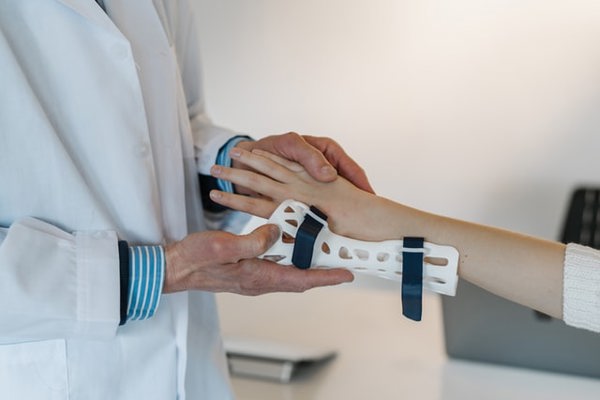The basis of vicarious liability comes from the notion that just as an employer benefits from the fruits of the labour of his employee, he should also bear the risk of harm that labour might cause to a third party. We commonly see this type of liability arise in personal injury cases, where an employer is held vicariously liable for an employee who has been negligent and, as a result of that negligence, someone has been injured.
How did it begin?
The modern law on vicarious liability developed in 2001 in the House of Lords case Lister v Hesley Hall ("Lister"), in which a school warden was alleged to have perpetrated sexual abuse on pupils at the school. The importance of the case was the recognition by the House of Lords of the “close connection” test when determining vicarious liability.
The standard test on vicarious liability looked at whether the wrongdoing committed was an unauthorised mode of carrying out an authorised act. However, this test proved difficult to apply in sexual abuse cases like Lister. The House of Lords therefore held that it was sufficient if the wrongdoings carried out were "closely connected" to the wrongdoer’s employment. Applying this test, the school was found to be vicariously liable on the basis the sexual abuse was inextricably interwoven with the carrying out of the warden’s duties.
In 2012, the position shifted following The Catholic Child Welfare Society and others v Various Claimants and The Institute of the Brothers of the Christian Schools and others ("Christian Brothers"). Here the Supreme Court held that to establish vicarious liability a two-stage test had to be met. Part one of the test looked at the relationship between the defendant and the wrongdoer, focusing on whether it was an employment relationship or one akin to employment. Part two of the test then looked at the connection between that relationship and the wrongful act, i.e., the "close connection" element.
This case dealt with sexual abuse committed by members of the Christian Brothers who lived and taught at a Roman Catholic school. The court found the relationship between the Christian Brothers members and the Institute itself to be one akin to employment, as the members were directed to teach and conduct themselves as teachers within the Institute's rules, and when teaching, they were doing so in furtherance of the objectives of the Institute - all essential elements of an employment relationship.
A fluctuating position
Since its inception, the Christian Brothers two-stage test has been applied by the Supreme Court in many cases dealing with vicarious liability, from Mohamud v Wm Morrison Supermarkets in 2016 ("Mohamud"), Various Claimants v Wm Morrison Supermarkets in 2020 ("Morrison"), to Barclays Bank plc v Various Claimants also in 2020 ("Barclays").
In Mohamud, the defendant was held vicariously liable for its employee who had physically attacked and racially abused a customer whilst working. Notably, the court considered two factors in its assessment of the "close connection" test. Firstly, what functions had been entrusted by the employer to the employee; and secondly, whether there was “sufficient connection" between the employee's position and his wrongful conduct, to make it right for the employer to be vicariously liable. The court also noted that the employee's motive for his actions was irrelevant; it was not important whether his motive was “personal racism rather than a desire to benefit his employer’s business”. The employer's decision to entrust the employee with serving customers meant it was held responsible for the employee's abuse of that position, regardless of motive. This decision represented a clear widening of the scope of liability on the part of employers for their employee's misbehaviour.
In Morrison, the position changed. The employer was not held vicariously liable for data breaches committed by a rogue employee. Here, the Supreme Court explained that the "close connection" test cannot be satisfied simply on the basis there is a temporal or causal connection between the employment and the wrongdoing. In contrast to Mohamud, the court also deemed the motive of the wrongdoer to be a "plainly important" and "highly material" point.
In Barclays, the scope was narrowed further. A doctor, arranged by the bank to carry out pre-employment medical examinations on job applicants, was accused of sexually assaulting the applicants during those examinations. Reversing the first instance and Court of Appeal decisions, the Supreme Court deemed the relationship between the bank and doctor not to be akin to employment. It was held that a relationship akin to employment did not extend so far as to make an employer liable for the conduct of "true independent contractors".
The position now
The Supreme Court considered vicarious liability again in 2023, in Trustees of the Barry Congregation of Jehovah's Witnesses v BXB ("BXB"). A member of the Barry Congregation of the Jehovah’s Witnesses, the respondent, was raped by one to the appellant's elders, Mark Sewell, at his home, following door-to-door evangelising. The respondent and her family were close friends of Mr Sewell and his family. The court found the trustees of the Barry Congregation not to be vicariously liable for the actions of the elder. Whilst the relationship of Mr Sewell and the appellant was deemed to be one akin to employment, the respondent had failed to satisfy the "close connection". In reaching this conclusion, the court reasoned that the primary reason the offence took place was because Mr Sewell was abusing his position, not as an elder but as a close friend on the respondent and he was not carrying out any activities as an elder when the rape took place. In making its decision, the court provided clarity on the modern law on vicarious liability through a helpful summary of the law as it currently stands:
Stage one:
- Is the relationship between the defendant and the wrongdoer one of employment or akin to employment?
- If the wrongdoer is a true independent contractor, there will be no vicarious liability.
Stage two:
- Is the wrongful conduct so "closely connected" with acts the wrongdoer was authorised to do, that it can fairly and properly be regarded as done by the wrongdoer while acting in the course of their employment or quasi-employment?
- The mere existence of a causal connection will not be sufficient, i.e., even if but for the wrongdoer’s employment the wrongful conduct would not have occurred, this is not enough to give rise to vicarious liability.
The court further noted that in more complex cases it can be helpful to consider, in addition to the two-stage test, whether the proposed result aligns with the underlying policy justification of vicarious liability, i.e. that the employer, who is benefitting from the activities being carried out by the employee, should also bear the cost of wrongdoing being committed in the course of those activities.
In recent years, the modern law on vicarious liability has been discussed in the UK's highest courts extensively. The decision in BXB did not make any major changes to vicarious liability nor was its scope widened or narrowed any further. However, perhaps the clarity provided in the decision will facilitate decision-making in lower courts, and in turn, will reduce the scope for future vicarious liability disputes reaching the higher courts as frequently.


